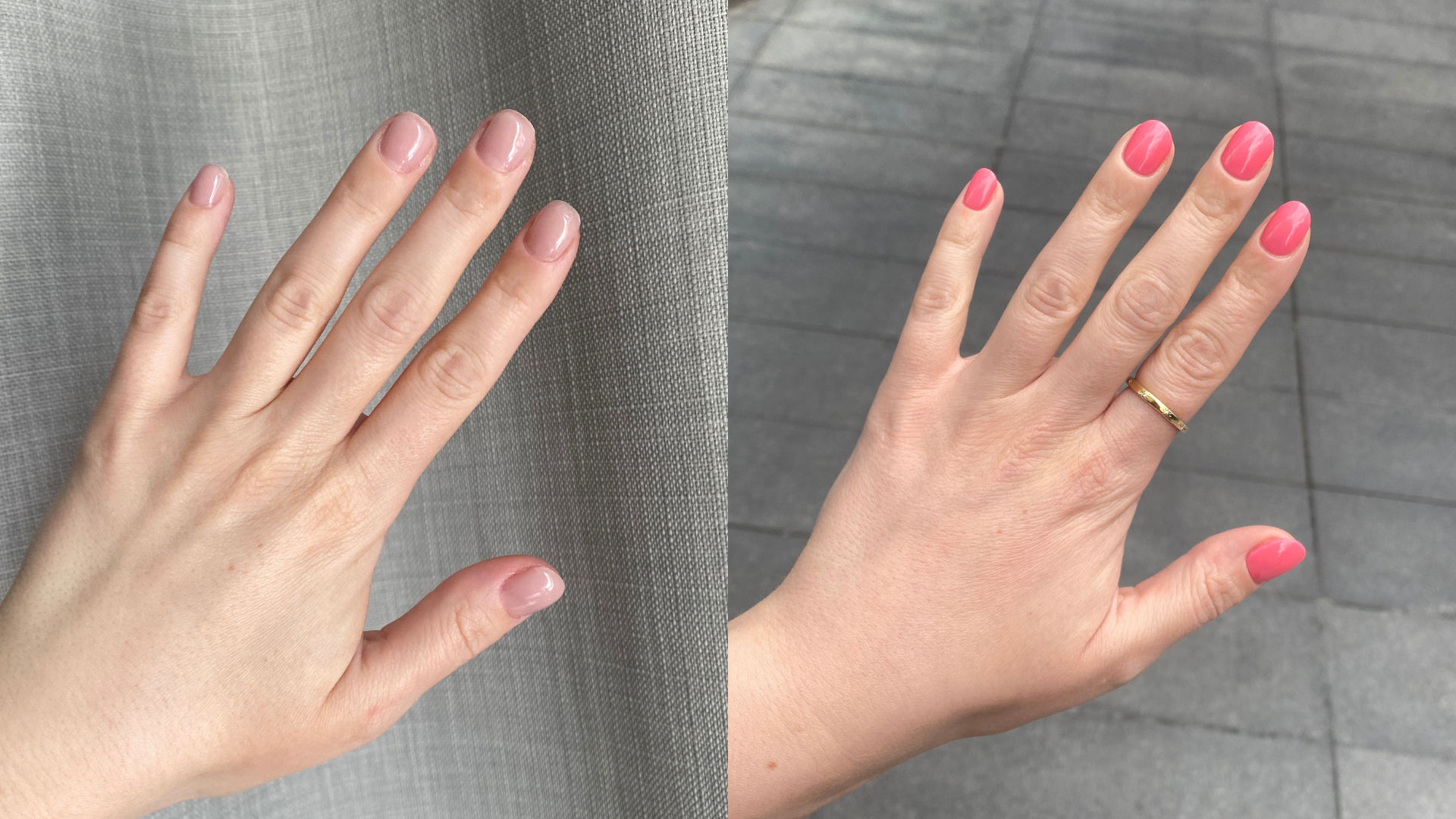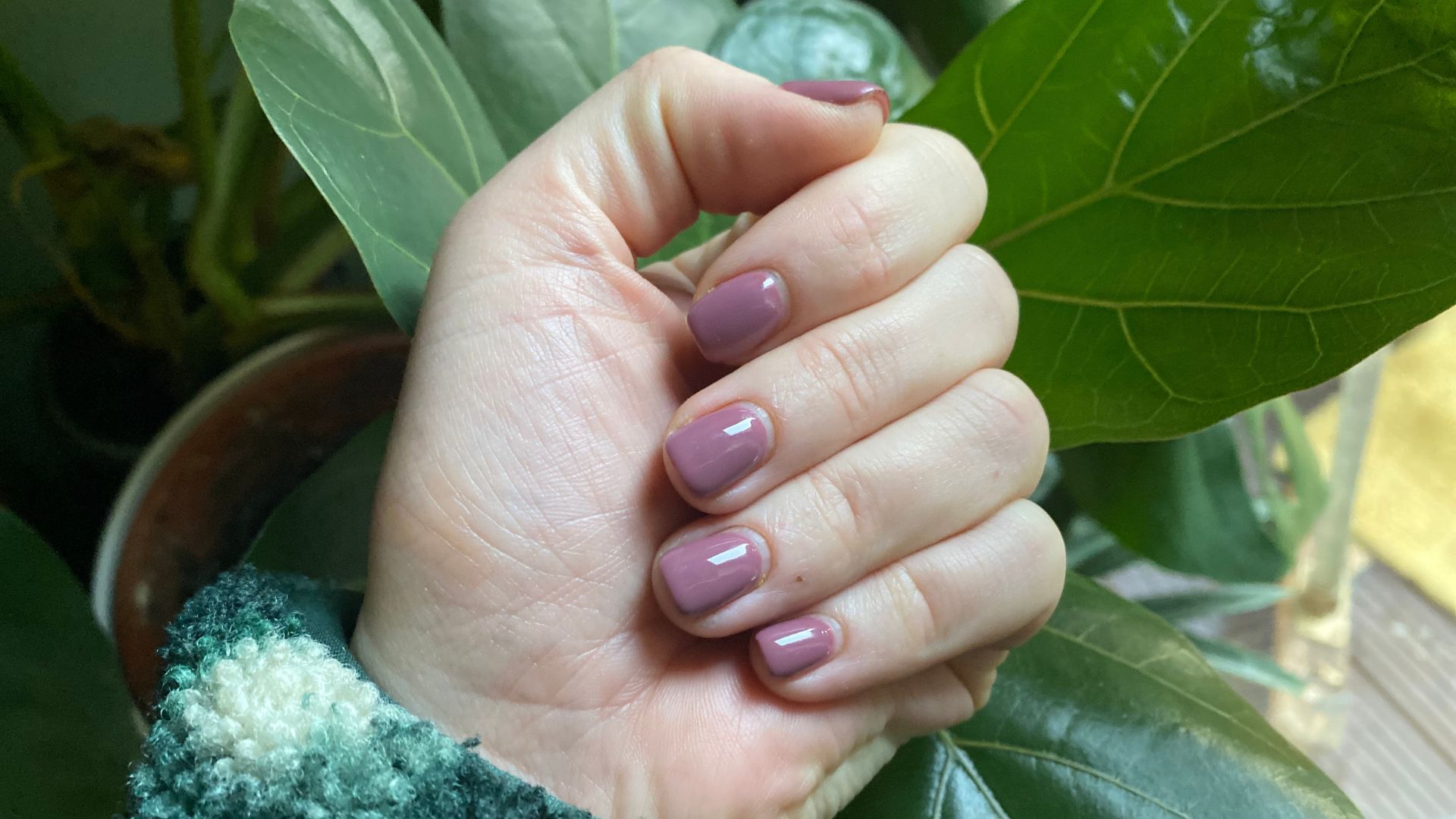BIAB vs gel nails: What's the difference? Plus, how to choose the best manicure for you
Our expert guide explains the differences between BIAB vs gel nails to help you settle on your next manicure


The nail salon menu is an ever-growing entity and, in 2024, there are more manicure services than ever before. Each one has its own unique set of benefits, but in this particular woman&home guide we’ll be comparing BIAB vs gel nails.
The classic and well-loved gel manicure has been around for decades, while BIAB nails are a type of builder gel – a category that has surged in popularity over the past few years. Today, it remains one of the biggest 2024 nail trends along with services like Bio Sculpture nails. Both BIAB and traditional gel are brilliant options that have amassed legions of loyal fans, but there are key differences between the two.
As such, you may be undecided as to which is the best choice for you, so to help you decide which one fits your lifestyle and budget, we spoke to three nail experts to get their qualified insights into the pros and cons of each to compile this dedicated guide. Here's what you need to know about BIAB vs gel nails...
The expert guide to BIAB vs gel nails
What are BIAB and gel nails?
A gel manicure involves painting the nails with coloured polish that has to be cured under a lamp to harden. Available in just about every shade you could wish for, including on-trend summer nail colours, these polishes are more durable than the bottles of traditional polish that you might pick up in Boots or John Lewis. Gel can be soft and slightly flexible, or hard gel, but what we'd traditionally refer to as a gel manicure tends to involve the former.
On the other hand, BIAB stands for “Builder In A Bottle”, with the acronym trademarked in the UK by The GelBottle Inc., and is a type of builder gel. It has slight flexibility and is thicker than many gel products, making it incredibly durable. “BIAB is a medium viscosity builder gel designed to be used as a natural nail overlay, mimicking the nail’s natural apex and providing strength to the nail plate underneath any gel colour or top coat,” Giorgia Cappella, the brand’s training and education manager, tells woman&home. “Unlike a regular manicure, this service can protect the natural nail against breakages by providing structure to the nail’s stress point.”
It’s this last point that has caused builder gel manicures to surge in popularity over the last few years, as this added protection allows many to grow their natural nails who have previously struggled to do so. In short, BIAB is a type of builder gel, and while builder gel can technically used as part of a gel manicure, the key difference is that it's stronger than traditional gel polish.
BIAB vs gel nails: Key differences

Sheer pink BIAB nails booked with the Ruuby app (left) and TOWNHOUSE's signature gel manicure (right)
- Appointment length: BIAB requires more sculpting and building of the layers to create structure and durability and therefore takes longer if colored polish is also applied over the top. Expect to allow up to an hour for a gel manicure and an hour and a half for BIAB nails.
- Colors: The choice of colors, though growing, is more limited with builder gel formulas, though manicurists normally get around this by using a clear or light builder gel base with gel or regular nail polish over the top.
- Durability: As with acrylic or dip powder nails, BIAB is more durable than regular gel polish and therefore more hard-wearing, so you are less likely to chip or break a nail.
- Feel: Similar to the above, there’s a difference in how these treatments feel on your nails. Depending on how strong they are naturally, your nails can still feel a little flexible with regular gel polish, but not with builder gel as it’s applied in a thicker layer and is stronger.
- Look: Because builder gel is and is sculpted into a protective overlay, and has a denser consistency to more fluid gel polishes, BIAB nails look thicker, too.
- Price: Because of differences in appointment length and technique, gel manicures cost less than BIAB nails, usually by at least $10.
Is BIAB the same as gel?
As we've touched on, while BIAB is a type of builder gel, it's different to regular flexible gel polish or shellac nails. "BIAB is a strengthening gel that contains pigment, which means it can be built up on top of your natural nail to create a beautiful, shiny manicure," explains Aussie Parnell-Raghnal, nail technician at Duck & File Mayfair. "Gel polishes are a liquid form of polish cured under a UV lamp, whereas BIAB has a much thicker consistency with a stronger base."
Sign up to our free daily email for the latest royal and entertainment news, interesting opinion, expert advice on styling and beauty trends, and no-nonsense guides to the health and wellness questions you want answered.
Because of its thicker consistency, builder gels like BIAB are also applied very differently, as manicurist Alex Philamond notes. “It also cures differently under the lamp and so it's important that it's done so on a low heat setting for the prescribed amount of time," he explains.
"Because it is a fairly new product, the colour ranges aren't nearly as extensive, with most builder gels being available in nudes or neutral colours, but this is advancing so quickly as brands launch new collections," he continues. "Regular gel polish can be painted over the top, however, so this shouldn't curb your choices too much."
Does BIAB last longer than gel?
Yes, BIAB does tend to last longer than the two-week lasting time of a gel mani. "It's applied with a thicker layer to your natural nail, while gel polish is usually applied as a thin layer," says Parnell-Raghnal. "It is more durable, so [can last] three to four weeks."
"That's the innovation behind it that has created its spike in popularity," Philamond says of the durability of builder gels like BIAB. “Most manicurists would not prescribe leaving more than three-to-four weeks between appointments, in order to preserve the health of the natural nail. Builder gel can either be soaked off, or infilled by removing old, lifted product and applying fresh gel over the top."

Beauty editor Fiona McKim's BIAB nails, two weeks after application
Are there any downsides to BIAB vs gel nails?
BIAB is brilliant, but there are a couple of reasons that a gel manicure could be a better choice for you. For one thing, the longer technique and time means that the service tends to cost at least £10 more than gel polish alone. “There are barely any downsides, bar the fact that due to its thicker consistency, it can take an extra couple of minutes to soak off and remove [than traditional gel polish],” Philamond says. “It is important for your manicurist to have enrolled in the correct training in how to apply builder gel, as it's a technical application process that differs greatly from regular gel polish. Enquire that your manicurist is proficient and experienced in builder gel before booking in, to ensure you receive the best and longest-lasting results.”
BIAB vs gel nails: the woman&home verdict
When weighing up BIAB vs gel nails, it's not really about one being "better" than the other, as they are different services. It really comes down to your priorities. If you want to grow your natural nails or need something more hardwearing, but you aren't keen on acrylic nails, builder gel is without a doubt the hardier choice. The sturdiness protects nails from the environment and significantly reduces the chance of splitting or peeling – I say that as someone who has only ever grown their natural nails to an extension-worthy length thanks to BIAB.
For those who want to spend less on a shiny manicure, however, gel is still a great choices as it is fairly chip-resistant and lasts for around a fortnight – which is still far longer than most people can make a manicure with traditional nail polish last. The generally shorter appointment length, for both application and removal, is also a plus for those who struggle to fit in a salon visit. Ultimately, think about your manicure needs from a time, cost and lifestyle perspective to work out which is best for you. It may be worth booking in for both services and comparing the results on your own nails.
Lucy is a UK-based beauty journalist who has written for titles including Marie Claire, Glamour and OK!, as well as contributing to woman&home. Her work covers everything from expert skin and haircare advice to beauty trends and reviews of the latest products. During her career she regularly speaks to the industry's leading hairdressers, dermatologists and make-up artists, has covered backstage at London Fashion Week and interviewed many a celeb about their beauty routine.
